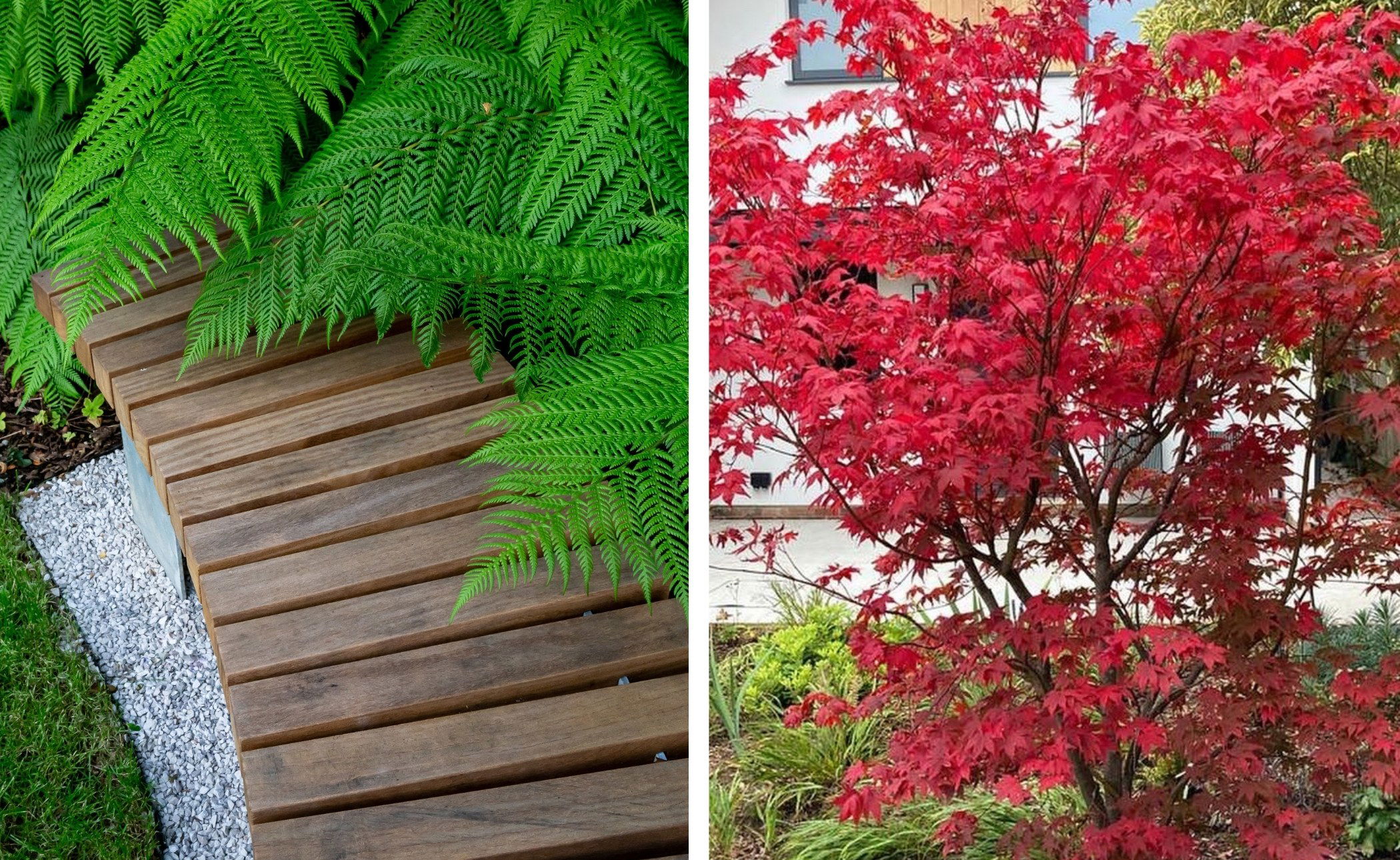How to Design an Eco-friendly & Biodiverse Garden
Sustainable design is one of our core passions. Whether we’re working on new build homes or biodiverse outdoor spaces, we are always looking for ways to implement renewable, carbon neutral and energy efficient elements across all of the projects that we design.
As we mark Earth Day, we’re taking the opportunity to focus on our relationship with the outdoor world. In this article we’ll be exploring three eco-friendly gardens our Landscape Design team have been excited to work on.

1. A Regenerative Wildlife Garden
Currently nearing completion, this wildlife garden in Oxfordshire has evolved into a diverse outdoor space with sustainability and biodiversity at its heart.
Native trees and shrubs have been planted throughout, and an old clay pit has been transformed into a wildlife pond. Nothing has been removed from site and we’ve been creative with the repurposing of materials to form different habitats that encourage biodiversity – such as log piles built from dead wood for amphibians and small mammals to shelter in when hibernating.


However, the tranquil outdoor space isn’t just limited for wildlife to enjoy – meandering paths lead you on an exciting journey through the wooded space to the pond, encountering different unique and intriguing elements along the way.
One of these takes the form of a striking garden folly. The feature represents a historic cottage that once stood in the grounds but was destroyed by a fire in the early 1900’s. We were lucky enough to find remnants of the cottage when the clearance began and wanted to breathe new life into its story.
Throughout the design process we have collaborated with ecologists, tree specialists, local council officers and planning consultants to create the best possible results to enhance the surrounding biodiversity of the site. We can’t wait to see how the garden develops over time as it continues to support local wildlife, both big and small.

2. Insect-Friendly Summer Planting
Layers of diverse planting make this cottage garden project both vibrantly beautiful during the summer months, while also providing a biodiverse habitat where pollinators can flourish.
With a lush lawn at the centre, we designed large raised beds of mixed perennial and herbaceous plants that provide layers of texture, shape and colour that last well into autumn, and which are loved by both bees and hoverflies alike.

Variety was key in the choice of planting throughout the garden. Traditional lavender and roses are complemented with drifts of long flowering Cosmos and perennials, including Helenium, Persicaria, Dahlia and Salvia. Combining flowers and herbs from multiple different families ensured both a beautiful and richly layered garden, that provides plenty of interest and caters to a wide range of insects and pollinators.
The transformed garden also provided areas for the client to add their own unique finishing touches, including a miniature stone fairy house, reclaimed garden furniture and antique herb trolly.
Click here for more tips and ideas on designing a pollinator-friendly garden.


3. Focusing on Foliage
While beautiful, most flowering plants are only in bloom for a relatively short period each year – this is where a well planned foliage scheme comes into its own.
For this Japanese-style family garden, we created a varied scheme that provides year-round layers of interest, with different leaf colours, textures, shapes and sizes all blending together in the borders surrounding the lawn.

As with flowering plants, ensuring plenty of variety in the species of foliage in a garden also serves as a diverse habitat and shelter for local wildlife.
We introduced Euphorbia and purple Sage where the sun catches in the corner of the garden, as well as drifts of Hakonechloa around a feature Acer tree to create a serene setting that evolves across the changing seasons.

Watch: Our Approach to Sustainable Design
Next Steps
Our in-house landscape designers have ambitious targets for sustainable garden design. We consider the ecology & biodiversity of every site from the very outset, ensuring we are doing all we can to conserve our planet for future generations.
Read more on our practice-wide approach to sustainable design.
Or, get in touch for an initial conversation on how we can help bring your own architecture, interior design or landscape design project to life.